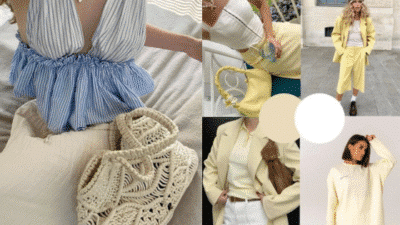Creative website design goes beyond good looks—it’s about finding new ways to engage visitors and guide them through your content. By blending effective layouts, interactive features, and thoughtful details, you can create a website that captures attention and keeps users interested. Today’s best designs make use of visuals, unique interfaces, and easy navigation to stand out in a crowded online space.
If you want your website to leave a lasting impression, understanding the essentials of creative design is key. Whether you’re building something from scratch or looking for fresh inspiration, you’ll discover techniques and examples that show how innovative design choices can benefit your project.
Key Takeaways
- Creative website design uses core principles to drive user engagement.
- Modern trends and tools help make websites unique and effective.
- Strategic design choices improve both appearance and user experience.


Fundamentals of Creative Website Design
A creative website design stands out by combining thoughtful visuals, deliberate art choices, and strategies that reinforce your brand’s unique personality. Strong web design merges form and function, enabling a memorable user experience and effective communication.
What Is Creative Website Design
Creative website design refers to more than just attractive layouts. It involves crafting a website that is visually distinctive, purposeful, and engaging for visitors. Functionality and innovation are both prioritized.
You use creative approaches like interactive elements, unique typography, or non-traditional layouts to capture visitor attention. At its core, creative web design aims to make the user journey smooth while leaving a lasting impression.
For best outcomes, you should balance creativity with usability. Essential elements include clear navigation, coherent structure, and content that aligns with the overall message of your website. Well-executed creative design doesn’t confuse visitors but guides them seamlessly through content.
The Role of Art and Visual Appeal
Art and visual appeal play a central role in effective creative website design. Colors, shapes, images, and whitespace all contribute to the impression users form within seconds of landing on your site.
You can enhance your site’s visual appeal by employing a unified palette, high-quality imagery, and deliberate visual hierarchy. For example, using bold illustrative art styles or animated graphics helps set your design apart while communicating specific emotions or themes.
Incorporating visual elements isn’t only about aesthetics. Creative visual choices should serve a purpose, whether it’s directing users to key actions or giving your brand a personality. Clarity should always be maintained; decorative elements should never hinder the usability of your web design.
Brand Identity Through Design
Creative website design is a crucial tool for expressing your brand identity. Every detail—from the logo placement and color scheme to the tone of microcopy—should align with your brand’s values.
You create brand recognition by maintaining consistency in visual elements and messaging across your site. Custom illustrations, tailored design motifs, and distinct typography can reinforce your brand voice.
- Branding Elements Table
| Element | Design Consideration |
|---|---|
| Logo | Prominent placement, scalability |
| Color Palette | Consistency, aligns with brand personality |
| Typography | Readable, distinct, on-brand |
Establishing a consistent design language builds instant recognition and trust with your users, making your website more memorable and effective in representing your business or organization.


Core Elements for Engaging Websites
Well-crafted websites hold attention through a combination of visual style, interactivity, and compelling media. Decisions about color, typography, animation, and imagery all directly influence user experience, brand perception, and engagement.
Bold Use of Colors and Typography
A distinct color scheme forms the backbone of your site’s visual identity. Using bold, contrasting colors makes headlines, buttons, and other key elements stand out, helping users instantly recognize important information.
Pairing a strong color palette with modern, bold typography brings clarity and emphasis to your content. Large, attention-grabbing fonts can establish hierarchy and enhance readability, especially for headers and calls to action.
It’s important to balance bright accent hues with sufficient white space. This keeps the design looking professional and prevents visual overload.
Tip:
- Use tools like Adobe Color or Coolors to create harmonious color schemes.
- Stick to 2-3 main font families for consistency.
A bold approach to color and type can reinforce your brand and make every page memorable.
Interactive Features and Animations
Interactive elements, such as hover effects, clickable menus, sliders, and forms, invite your visitors to explore and stay engaged longer. These features can provide feedback, guide navigation, or highlight content in a way that’s intuitive.
Animation adds further depth to your design, helping with storytelling and directing user attention. Subtle transitions—like fade-ins or button animations—can make the interface feel lively without being distracting.
Consider which interactive features align with your content and support the user’s journey. Overusing effects can distract or frustrate visitors, so prioritize usability and accessibility in every animation.
Common interactive features:
| Feature | Purpose |
|---|---|
| Hover effects | Instant feedback, navigation |
| Parallax scrolling | Adds depth, visual interest |
| Animated buttons | Highlights key actions |
| Interactive forms | Improves data collection |
Imagery, Photography, and Video
High-quality images and video are essential for communicating your message and reinforcing brand storytelling. Well-chosen photography humanizes your site and makes information relatable, while original or professionally sourced images create a sense of trust.
Use images to break up text, create mood, or highlight specific products and services. Video backgrounds, testimonials, or explainer clips can convey complex information quickly.
Maintain consistency in style and resolution to prevent a fragmented look. Optimizing files ensures fast load times, enhancing user experience across devices.
Best practices:
- Prefer authentic, high-resolution photography over generic stock.
- Use descriptive alt text for all visuals.
- Compress files for performance without sacrificing quality.


User Experience and User Interface Innovations
Adopting new approaches in website design means prioritizing seamless user experiences, visually cohesive interfaces, and practical accessibility. Trends like mobile optimization, creative navigation, and inclusive layouts are reshaping how you design engaging digital products.
Responsive and Mobile-Friendly Design
Responsive design ensures your website automatically adapts to various screen sizes and devices. Mobile-friendly strategies are crucial, with most users now browsing on smartphones or tablets.
Flexible grids, scalable images, and adaptive menus help your site maintain usability on any device. Tools like CSS media queries and fluid typography support this adaptability.
Performance optimizations, such as compressed images and minimal scripts, reduce load times on mobile networks. Testing across platforms helps you identify and fix layout or functionality issues before users encounter them.
A responsive and mobile-friendly site increases engagement, reduces bounce rates, and meets the expectations of today’s users.
Navigation and Unusual Layouts
Traditional navigation, like top bars or side menus, is evolving. Designers are experimenting with hidden menus, floating action buttons, and gesture-based controls, aiming to create unique, memorable experiences.
Unusual layouts—such as asymmetrical grids, split screens, or dynamic scrolling—can guide attention and encourage interaction. These layouts often combine animation, micro-interactions, or contextual navigation to keep users engaged.
Balancing creativity with usability is essential. If unusual navigation feels confusing, you risk frustrating users. Clear visual cues, feedback, and hints help users explore complex layouts without hesitation.
Use navigation conventions wisely, offering something fresh while ensuring people can always find what they need.
UI/UX Design Principles
User interface and experience design rely on best practices that make navigating and consuming content effortless. Consistency in color schemes, typographic hierarchy, and spacing provide visual harmony and clarity.
Intuitive feedback, such as hover states or progress bars, communicates system status and reduces uncertainty. Designing with content hierarchy in mind ensures users can quickly scan and find information.
Micro-interactions—like button animations or shake-to-refresh—add delight without causing distraction. Prioritizing essential elements, decluttering the interface, and simplifying actions all improve usability.
Effective UI/UX design anticipates needs and preferences, shaping an environment where users interact naturally and confidently.
Inclusive and Accessible Design
Accessibility in website design focuses on making every interaction user-friendly for people with disabilities. This includes high-contrast color schemes, keyboard navigation support, descriptive alt text for images, and compatibility with screen readers.
Clear headings and readable fonts benefit everyone, while videos with captions and transcripts help users who are deaf or hard of hearing. Accessible forms should provide labels, error messages, and logical tab order.
Tables with appropriate markup, focus indicators, and skip navigation links increase usability for a broader range of users. Implementing accessibility from the start always leads to stronger, more welcoming digital experiences.


Modern Trends and Inspiration Sources
The landscape of creative website design in recent years is shaped by notable advances in visual techniques, user-centric functionality, and award-winning innovation. Distinct approaches—from minimalist layouts to dynamic 3D graphics—set benchmarks for modern web experiences that both engage and inspire.
Web Design Trends and Best Practices
Modern web design trends focus heavily on user experience and accessibility. Simplicity, fast load times, and mobile-first layouts form the backbone of successful sites.
Designers now emphasize inclusive navigation and clear visual hierarchy, ensuring that content is both discoverable and easy to interpret. Voice search optimization and dark mode options are increasingly standard.
Best practices include consistent typography, logical use of grids, and attention to responsive scaling. Sites that leverage these approaches reduce friction and make interactions more intuitive.
Key points in best practices:
- Fast loading and performance optimization
- Accessible UI (contrast, text size, alt tags)
- Mobile and responsive layouts
- Persistent, clear navigation


Minimal and Bold Aesthetic Approaches
Minimalism remains a strong trend, featuring ample white space, simple color palettes, and sharp typography. Minimal designs prioritize content clarity, resulting in focused user journeys.
On the other hand, bold design techniques utilize striking colors, oversized type, and unconventional layouts to create memorable experiences. Both minimal and bold aesthetics can improve engagement when implemented thoughtfully.
A table comparing two approaches:
| Aspect | Minimal Design | Bold Design |
|---|---|---|
| Color Palette | Limited, neutral | Vivid, expressive |
| Typography | Clean, straightforward | Oversized, daring |
| Layout | Grid-based, spacious | Asymmetrical, energetic |
| Focus | Content clarity | Strong first impression |
Choosing the best web design approach depends on your brand and the message you wish to convey.
Animation Techniques and 3D Graphics
Smooth animations and microinteractions increase perceived quality by making websites feel more responsive. In 2025, scrolling animations, hover effects, and parallax effect backgrounds are prevalent.
3D graphics are now used not just for visual flair, but for functionality—such as product previews, interactive storytelling, and immersive navigation. Lightweight 3D elements powered by WebGL or CSS animations can boost both engagement and interactivity.
Popular animation techniques:
- Scroll-triggered animations
- Parallax background movement
- SVG and Lottie-based icon animations
When integrating animation, performance and accessibility remain priorities.
Inspiring Examples and Award Winners
Award-winning websites exemplify the best use of new design trends and technologies. Sites such as creative agencies, tech product launches, and eCommerce brands often set the standard for innovation.
Sources of website design inspiration include:
- Awwwards and CSS Design Awards for curated collections
- Case studies from platforms like Behance or Dribbble
- Brand sites using immersive 3D graphics or creative navigation
A few innovative website design examples in 2025 feature voice-guided browsing, seamless video backgrounds, and highly polished interactive sections. Reviewing these concepts can provide concrete web design inspiration for your own projects.


Strategic Approaches for Different Website Types
Website goals differ based on audience, industry, and function. Strategic website design should reflect these differences through layout, content, and user interactions.
Portfolio and Personal Brand Sites
A strong first impression is vital for portfolio websites and personal branding. Feature your work front and center, using large imagery, concise introductions, and clear calls to action like “Hire Me” or “Contact.” Minimal navigation keeps your work in focus and prevents distractions.
Your story, skills, and social links should be easily visible. Use a simple yet polished template with distinct sections for “About,” “Work Samples,” and testimonials. Responsive design is crucial so your work appears professional on both desktop and mobile.
Adding a downloadable resume or project list can further support your professional image. Highlight achievements and metrics wherever possible to build credibility quickly.
Business and Ecommerce Platforms
For a business or ecommerce website design, prioritize a layout that drives conversions. Place key products or services above the fold. Use clear navigation menus and a well-structured site hierarchy tailored for quick decision-making.
Display contact information and trust signals, such as reviews or certifications, in accessible locations. For ecommerce stores, ensure your shopping cart, search, filters, and product details are straightforward and intuitive.
Include a comparison table, FAQ section, and secure payment icons. Performance optimization is essential to minimize page load times, which directly impact sales and customer satisfaction.
Restaurant and Hospitality Websites
Designing a restaurant website requires emphasizing easy access to essential information. Place the menu, hours, location, and booking buttons or reservation widgets at the top or in a sticky header.
Integrate high-quality photos of your food, interior, and events. A simple homepage layout with quick links to menu sections or online ordering helps streamline the user journey. Prominently display important notices, such as special events or seasonal offerings.
Support mobile devices, since many visitors are searching on-the-go. Encourage engagement with integrated maps, Google reviews, and clickable phone numbers. Accessibility features like readable fonts and clear contrast improve usability for all guests.
Blogs and Educational Platforms
For a personal blog or educational site, structure is vital. Use an organized sidebar or menu to categorize posts or courses by topic for easier navigation. Feature recent or popular articles prominently to increase engagement.
Clear typography and ample whitespace support readability. Add author bios, related post links, and share buttons to foster community and repeat visits. Consider table of contents modules or filterable topic lists to help users find information quickly.
If you offer educational content, integrate downloadable resources, progress tracking, or interactive quizzes. Use templates that allow you to showcase both written and multimedia content effectively for a wider range of learning styles.


Tools, Builders, and Implementation Tactics
The tools you use to create a website can shape the outcome as much as your ideas. Selecting the right platform, deciding between templates or custom builds, and planning for marketing integration will directly affect both creative freedom and functionality.
Website Builders and Templates
Website builders like Squarespace and Wix offer streamlined ways to create a website without learning to code. Their drag-and-drop interfaces save time, letting you focus on layout, color, and visual hierarchy.
You can start with purpose-built templates, from portfolios and landing pages to ecommerce and one-page websites. Templates often include sections for image galleries, forms, and calls-to-action. This structure ensures you follow design best practices while enjoying flexibility to customize content, fonts, and imagery.
Many platforms also include graphic design tools, so you can adjust visuals, create centralized images, and add simple interactive elements. Some website builders offer limited data visualization options or allow basic animations to create an engaging, interactive experience.
Builder solutions work well if you need a functional site quickly. They are especially practical for artists, small businesses, and startups aiming for professional design without high upfront costs.
Custom Development and Unique Features
A custom website allows for tailored design decisions and advanced features beyond standard templates. If you want interactive design elements, complex data visualization, or a truly unique user experience, custom development is the logical choice.
Custom development gives you full control over layout, structure, and user interaction. You can build centralized image galleries tied to dynamic databases or craft unique landing pages targeting specific audience segments.
Graphic design capabilities are much broader, letting you coordinate animations, transitions, and interactive experiences that set your site apart. This approach is ideal when brand differentiation and specific technical requirements matter to your project.
Working with developers can significantly increase costs and require more time. However, the flexibility and advanced functionality can produce a truly standout website suited to your vision and business needs.
Digital Marketing Integration
Digital marketing integration should begin at the design phase. Connecting your site to analytics tools, email marketing services, and social media platforms can help you measure results and engage your audience.
Some website builders come with built-in marketing tools, making it simple to add pop-ups, landing pages, or subscription forms. You can track user actions and optimize content to boost conversions.
For custom sites, integration may require specialized plugins or APIs but offers better tracking and advanced features such as audience segmentation or real-time data reporting. Interactive components like quizzes or dynamic landing pages can increase engagement rates.
Tip: Use SEO-friendly structures and optimize images to enhance discoverability and performance across all platforms. This way, your creative website doesn’t just look appealing but also performs well in search results and digital campaigns.
- 0shares
- Facebook0
- Pinterest0
- Twitter0



